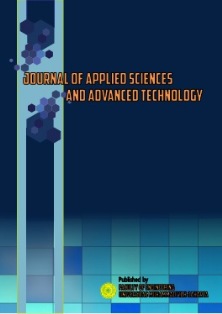Design Optimization of Distance Grid and Ground Rod in The Earth System
DOI:
https://doi.org/10.24853/jasat.2.2.53-58Keywords:
switchyard earthing system, grid, ground rod, quality, costAbstract
One of the main factors in securing an electric power system is the earthing system. The earthing system in the generating unit is closely related to the switchyard. Switchyard earthing system design is done by adjusting the grid distance and ground rod length to get the most optimal quality and cost combination. The definition of optimal conditions in this case is limited to circumstances where there is a combination of quality that does not exceed the technical tolerance threshold and has cost efficiency. The design of the switchyard earthing system was taken as a case study. Technical standards are carried out based on IEEE Std 80 - 2000. Calculations for obtaining technical parameters and costs are carried out one-by-one in the range of grid spacing and length of certain ground rods to determine the optimum point using MATLAB-GUI as a programming tool and MATLAB R2011a as a tool mathematical computing. Calculation results and analysis concluded that the grid distance of 23 m and the length of the 6 m ground rod is the best choice in the optimization of this earthing system by meeting the safety quality criteria for earth resistance is Rg = 0.13806 Ω less than 0.5 Ω with a minimum cost of Rp. 1,220,104,730.Downloads
References
Tabatabaei, N. M., & Mortezaeei, S. R. (2010). Design of grounding systems in substations by ETAP intelligent software. International Journal on «Technical and Physical Problems of Engineering, (2), 45-49.
Bendito, E., Carmona, Á., Encinas, A. M., & Jiménez, M. J. (2004). The extremal charges method in grounding grid design. IEEE transactions on power delivery, 19(1), 118-123.
Ghoneim, S., Hirsch, H., Elmorshedy, A., & Amer, R. (2007, June). Optimum grounding grid design by using an evolutionary algorithm. In 2007 IEEE Power Engineering Society General Meeting (pp. 1-7). IEEE.
Kasim, I., Abduh, S., & Fitryah, N. (2017, July). Grounding system design optimization on 275 KV betung substation based on IEEE standard 80-2000. In 2017 15th International Conference on Quality in Research (QiR): International Symposium on Electrical and Computer Engineering (pp. 400-407). IEEE.
Hendrawati, T. Y., Siswahyu, A., & Ramadhan, A. I. (2017). Pre-Feasibility Study of Bioavtur Production with HEFA Process In Indonesia. International Journal of Scientific & Technology Research, 6(04).
Chow, Y. L., Elsherbiny, M. M., & Salama, M. M. A. (1995, September). Earth surface voltages at a grounding system of buried grid and rods from the fast Galerkin's moment method. In Proceedings 1995 Canadian Conference on Electrical and Computer Engineering (Vol. 2, pp. 668-671). IEEE.
Ghoneim, S., Hirsch, H., Elmorshedy, A., & Amer, R. (2008). Optimization Technique for Grounding Grids Design. JOURNAL OF ELECTRICAL AND ELECTRONIC SYSTEMS RESEARCH, 1.
He, Z., Wen, X., & Wang, J. (2007, August). Optimization design of substation grounding grid based on genetic algorithm. In Third International Conference on Natural Computation (ICNC 2007) (Vol. 4, pp. 140-144). IEEE.
Almanda, D., Dermawan, E., Diniardi, E., Ramadhan, A. I., & Hidayat, S. (2016). Design And Test Equipment Model Rain Water Based Energy Effect of Size of Printed Material of Piezoelectric In Indonesia. International Journal of Engineering Inventions, 5(7), 48-55.
Elrefaie, E. M., Ghoneim, S., Kamal, M., & Ghaly, R. (2012, July). Evolutionary strategy technique to optimize the grounding grids design. In 2012 IEEE Power and Energy Society General Meeting (pp. 1-6). IEEE.
Almanda, D., Dermawan, E., Ramadhan, A. I., Diniardi, E., & Fajar, A. N. (2015). Analisis Desain Optimum Model Piezoelektrik PVDF Untuk Sumber Pembangkit Listrik Air Hujan Berskala Mini. Prosiding Semnastek.
Hardi, S., Nasution, A., & Purnamasari, F. (2019). Modeling of Substation Grounding Grid Design Using Lab View Graphical User Interface. In 2019 3rd International Conference on Electrical, Telecommunication and Computer Engineering (ELTICOM) (pp. 149-154). IEEE.
Gholami Farkoush, S., Khurshaid, T., Wadood, A., Kim, C. H., Kharal, K. H., Kim, K. H., & Rhee, S. B. (2018). Investigation and optimization of grounding grid based on lightning response by using ATP-EMTP and genetic algorithm. Complexity, 2018.
Salam, M. A., & Noh, M. (2012). Measurement of grounding resistance with square grid and rods near substations. In 2012 IEEE Electrical Power and Energy Conference (pp. 123-127). IEEE.
Mahmud, K. H., Yudistirani, S. A., & Ramadhan, A. I. (2017). Analysis of power characteristics of model thermoelectric generator (TEG) small modular. International Journal of Scientific & Technology Research, 6(4), 161-167.
Khodr, H. M., Salloum, G. A., Saraiva, J. T., & Matos, M. A. (2009). Design of grounding systems in substations using a mixed-integer linear programming formulation. Electric Power Systems Research, 79(1), 126-133.
Ma, J., Dawalibi, F. P., & Southey, R. D. (2002, October). Effects of the changes in IEEE Std. 80 on the design and analysis of power system grounding. In Proceedings. International Conference on Power System Technology (Vol. 2, pp. 974-979). IEEE.
Downloads
Published
Issue
Section
License
COPYRIGHT POLICY
The author(s) of an article published in the Journal of Applied Sciences and Advanced Technology (JASAT) retains ownership of the intellectual property rights in work (s).
PUBLISHING RIGHTS
The author(s) of an article published in the Journal of Applied Sciences and Advanced Technology (JASAT) have unrestricted publication rights. The authors give the Journal of Applied Sciences and Advanced Technology (JASAT) the right to publish the article and designate the Faculty of Engineering Universitas Muhammadiyah Jakarta Publishing as the original publisher of the article.
LICENSING POLICY
JASAT is an open-access journal that follows the Creative Commons Non-Commercial 4.0 International License (CC BY-NC 4.0), which states that:

Under this license, the reusers must give appropriate credit, provide a link to the license, and indicate if changes were made. Users may do so in any reasonable manner, but not in any way that suggests the licensor endorses users or their use.
Please take the time to read the whole license agreement (https://creativecommons.org/licenses/by-nc/4.0/). As long as reusers follow the license conditions, the owner cannot withdraw these freedoms. The following components are included under this license:
 Attribution: Users must provide appropriate attribution, including a link to the license, and indicate whether or not they made any modifications. Users are free to do so reasonably, but not in a manner that indicates the licensee approves of their usage.
Attribution: Users must provide appropriate attribution, including a link to the license, and indicate whether or not they made any modifications. Users are free to do so reasonably, but not in a manner that indicates the licensee approves of their usage.
 NonCommercial: Users may not use the material for commercial purposes.
NonCommercial: Users may not use the material for commercial purposes.












_2.png)


1.png)

2.png)
